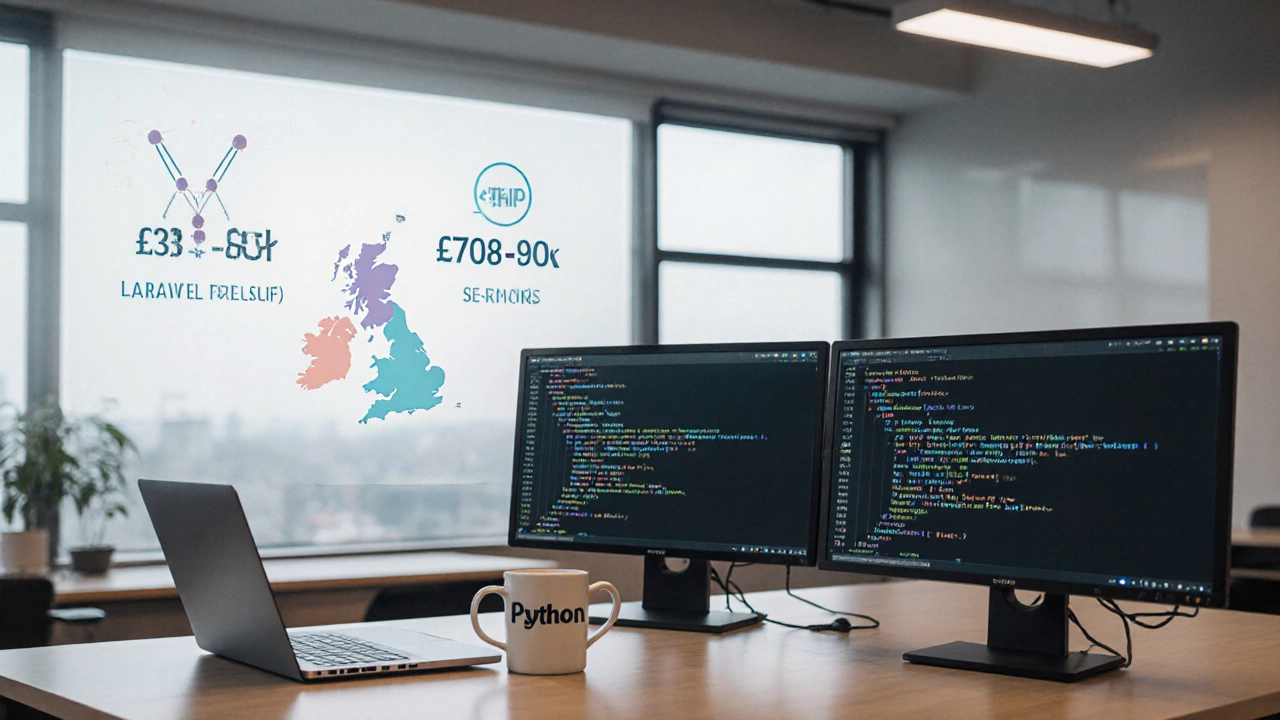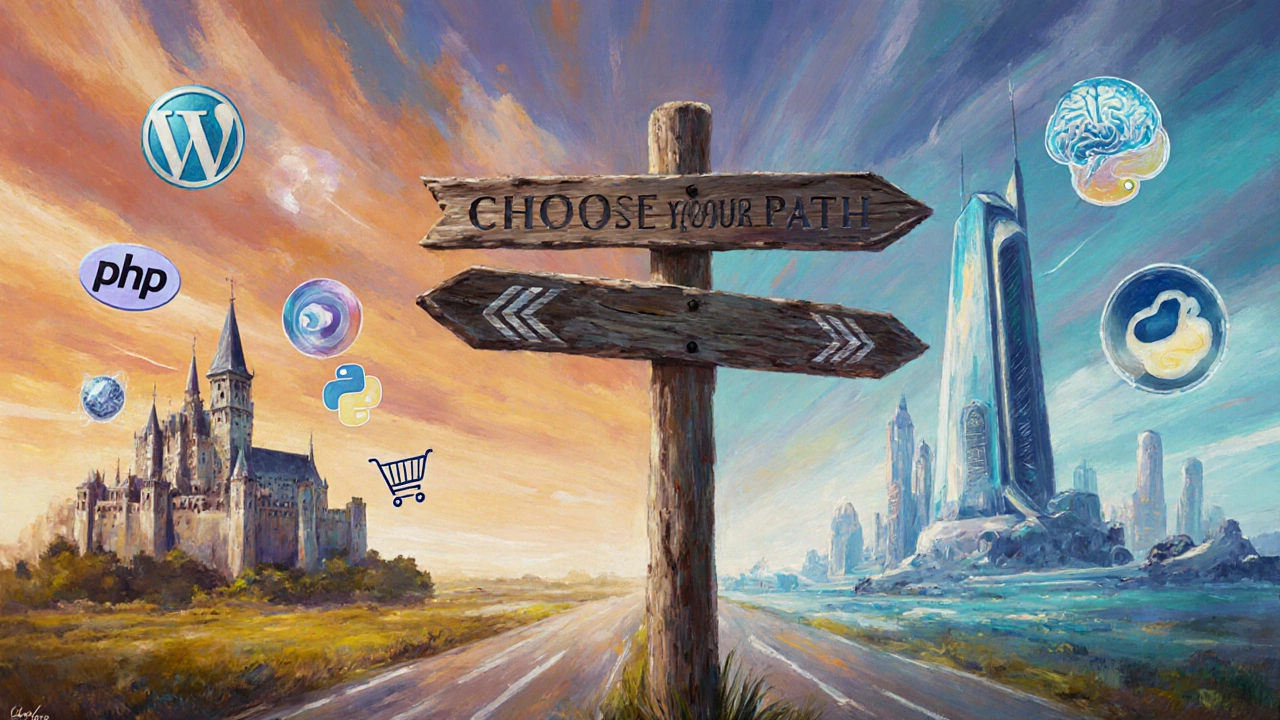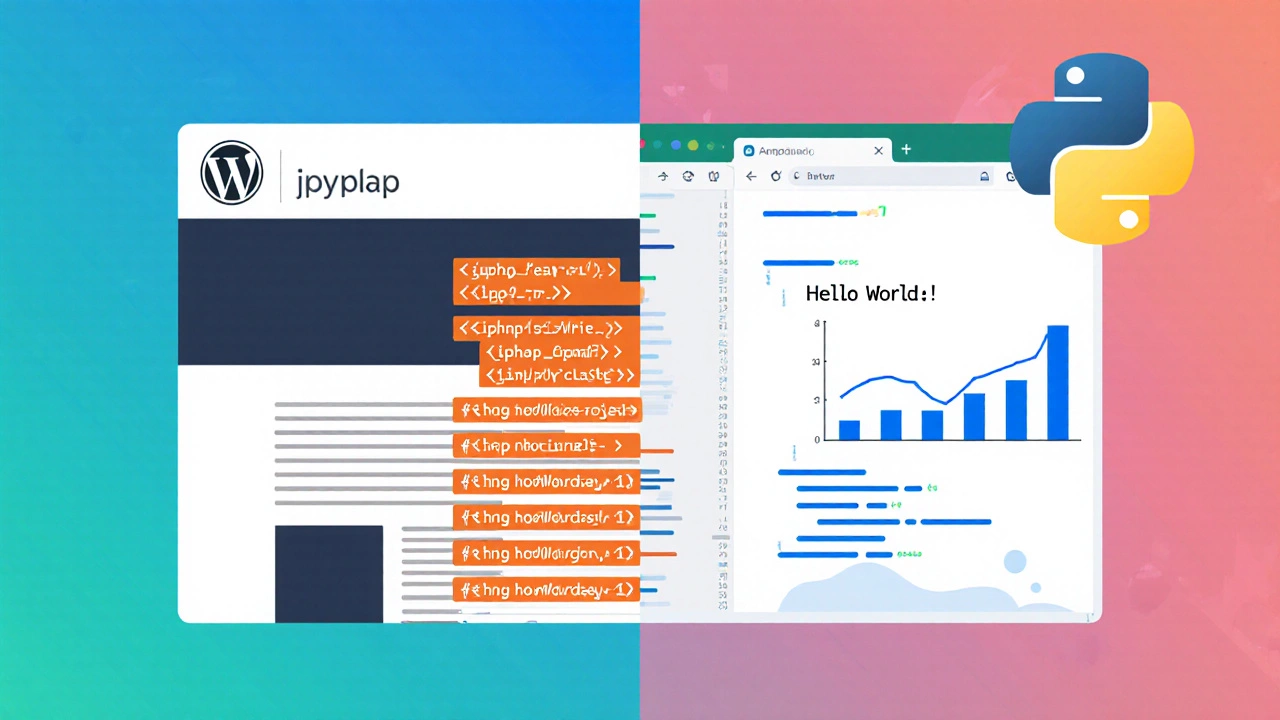When deciding between the two, it helps to know what each language actually is. PHP is a server‑side scripting language that powers WordPressthe world’s most popular content‑management system and countless other web apps. It excels at embedding dynamic content into HTML and has a massive ecosystem of CMSs, frameworks, and hosting support. On the other hand, Python is a high‑level, general‑purpose language known for its readability and extensive libraries, from web frameworks like Djangoa batteries‑included framework for building data‑driven sites and Flaska lightweight micro‑framework to data‑science toolkits. This article walks through the key factors you should weigh in 2024.
Key Takeaways
- If you aim to work on WordPress sites or join agencies that specialize in legacy web apps, PHP remains the pragmatic choice.
- For roles involving data analysis, machine learning, or modern web stacks (e.g., React front‑ends with a Django back‑end), Python offers a broader horizon.
- Both languages have strong salary prospects, but Python‑centric roles tend to command slightly higher averages in 2024.
- Learning both isn’t a waste - they complement each other and boost freelance versatility.
- Consider the local job market, the type of projects you enjoy, and the community support you need.
Job Market Snapshot for 2024
Data from the UK’s Office for National Statistics and job boards like Indeed show that Python listings have grown 22% year‑over‑year, while PHP listings are stable with a modest 5% rise, driven largely by WordPress maintenance contracts. In Bristol, the average salary for a junior Python developer sits around £38,000, compared with £34,000 for a junior PHP developer. Senior roles flip the numbers: senior Python engineers can earn £70k-£90k, whereas senior PHP engineers hover around £65k, especially when they specialize in eCommerce platforms like WooCommerce.
Learning Curve and Community Support
Both languages boast massive communities, but the way they help newcomers differs.
- PHP: The official manual is exhaustive, and platforms like WordPress, Laravel, and Symfony provide starter projects that you can spin up with a single command. The language’s syntax is forgiving; you can write a working script in under 20 lines.
- Python: Its hallmark is “readability equals productivity.” Beginner tutorials often start with a simple *Hello, World!* script that fits on one line. The official docs are clear, and the PyPI repository offers over 300,000 packages.
In practice, many learners find Python’s indentation rules - which enforce clean code - easier to adopt than PHP’s optional braces.
Ecosystem & Tooling
When you choose a language, you also pick an ecosystem of frameworks, databases, and deployment tools.
- Laravela modern PHP framework with expressive syntax, built‑in ORM, and queue system offers a polished developer experience similar to Python’s Django.
- MySQLthe most common relational database for both PHP and Python web apps integrates smoothly with PHP’s PDO extension and Python’s SQLAlchemy ORM.
- Both languages support REST APIstandard way of exposing data over HTTP development, but Python’s FastAPI library makes building high‑performance APIs extremely fast.
- Containerisation with Docker has become standard for both stacks, ensuring you can ship a PHP‑Laravel app or a Python‑Django app with identical deployment pipelines.

Salary & Freelance Potential
Freelancers who master PHP can tap into the massive WordPress maintenance market. According to Upwork’s 2024 report, WordPress‑related gigs average $35/hr, with premium sites (custom plugins, complex themes) fetching $70/hr. Python freelancers, especially those offering data‑pipeline or AI services, see rates from $50/hr to $120/hr for niche expertise.
Future Outlook: 2024‑2025
PHP 8.2 is now stable, introducing readonly classes and true enums - features that narrow the gap with modern languages. Meanwhile, the rise of Jamstack has spurred interest in headless WordPress, where the front end may be built with React while the back end stays PHP‑driven.
Python, however, continues to dominate AI, automation, and scientific computing. The 2024 release of Python 3.13 includes performance improvements that make it 10‑15% faster for typical web workloads, narrowing the historical speed advantage PHP once held.
When to Pick PHP for WordPress Development
If your primary goal is to become a WordPress developer-building themes, custom plugins, or managing large multisite networks-learning PHP first is virtually mandatory. WordPress’s core functions (e.g., add_action, WP_Query) are written in PHP, and there’s no official Python API for the platform.
Moreover, many agencies still run legacy sites on older PHP versions, so being able to maintain and upgrade them is a marketable skill.
When Python Gives You the Edge
If you’re drawn to data‑driven products, SaaS back‑ends, or want to future‑proof your skill set against AI trends, Python is the safer bet. Its ecosystem supports rapid prototyping (Jupyter notebooks), machine‑learning pipelines (TensorFlow, PyTorch), and web services that can integrate with WordPress via the REST API or GraphQL.

Side‑by‑Side Comparison
| Aspect | PHP | Python |
|---|---|---|
| Primary Use‑Case | Web pages, WordPress, CMS platforms | Web apps, data science, AI, automation |
| Latest Stable Version (2024) | 8.2 | 3.13 |
| Learning Curve | Moderate - lots of legacy syntax | Gentle - clear syntax, enforced indentation |
| Top Frameworks | Laravel, Symfony, WordPress | Django, Flask, FastAPI |
| Average UK Salary (Junior) | £34,000 | £38,000 |
| Freelance Hourly Rate | $35-$70 | $50-$120 |
| Community Size (2024) | ~5 million developers | ~8 million developers |
| Best For WordPress | ✔️ | ❌ (requires bridge via REST) |
Quick Decision Checklist
- Are you targeting WordPress theme/plugin work? → Choose PHP.
- Do you want to build data‑heavy SaaS products or AI services? → Choose Python.
- Do you need higher freelance rates quickly? → Python often pays more.
- Do you prefer a language with a syntax that forces clean code? → Python.
- Can you handle learning two languages over time? → Start with the one that aligns with your first projects, then add the other.
Learning Resources (Free & Paid)
- PHP - Official PHP tutorial, Laracasts (Laravel focused), WordPress Codex.
- Python - Python.org tutorial, Codecademy, Real Python, Django Girls workshop.
- Cross‑learning - freeCodeCamp offers full‑stack projects using both languages via API integration.
Conclusion: Pick the Language That Matches Your Goal
There’s no universal answer. If your day‑to‑day will involve tweaking WordPress sites, writing custom plugins, or joining a agency that delivers client websites, PHP is the practical entry point. If you’re eyeing roles in data science, AI, or building modern web services that may someday talk to WordPress via its REST API, Python gives you a broader playground.
Many developers end up learning both-start with the language that aligns with your first gig, then expand. The important thing is to keep building real projects; that’s what employers and clients care about.
Is PHP still relevant in 2024?
Absolutely. PHP powers 78% of the web, most notably WordPress. New versions (8.2) add modern features like enums and JIT, keeping it performant and secure for CMS work.
Can I use Python to develop WordPress plugins?
WordPress itself runs on PHP, so native plugins must be written in PHP. However, you can build external services in Python and connect them via the WordPress REST API or GraphQL.
Which language offers better job security in the UK?
Both are safe bets, but data‑science and AI roles (Python‑centric) are growing faster. WordPress maintenance jobs are steady, especially for agencies serving small businesses.
Do I need to learn both languages to be a full‑stack developer?
Not strictly. You can build full‑stack apps using PHP (Laravel) + Vue.js or Python (Django) + React. Learning both expands your market, but pick one stack first.
What’s the easiest way to host a PHP website?
Shared hosting with cPanel (e.g., SiteGround, Bluehost) offers one‑click WordPress installs. For more control, a VPS with Nginx + PHP‑FPM is common.
